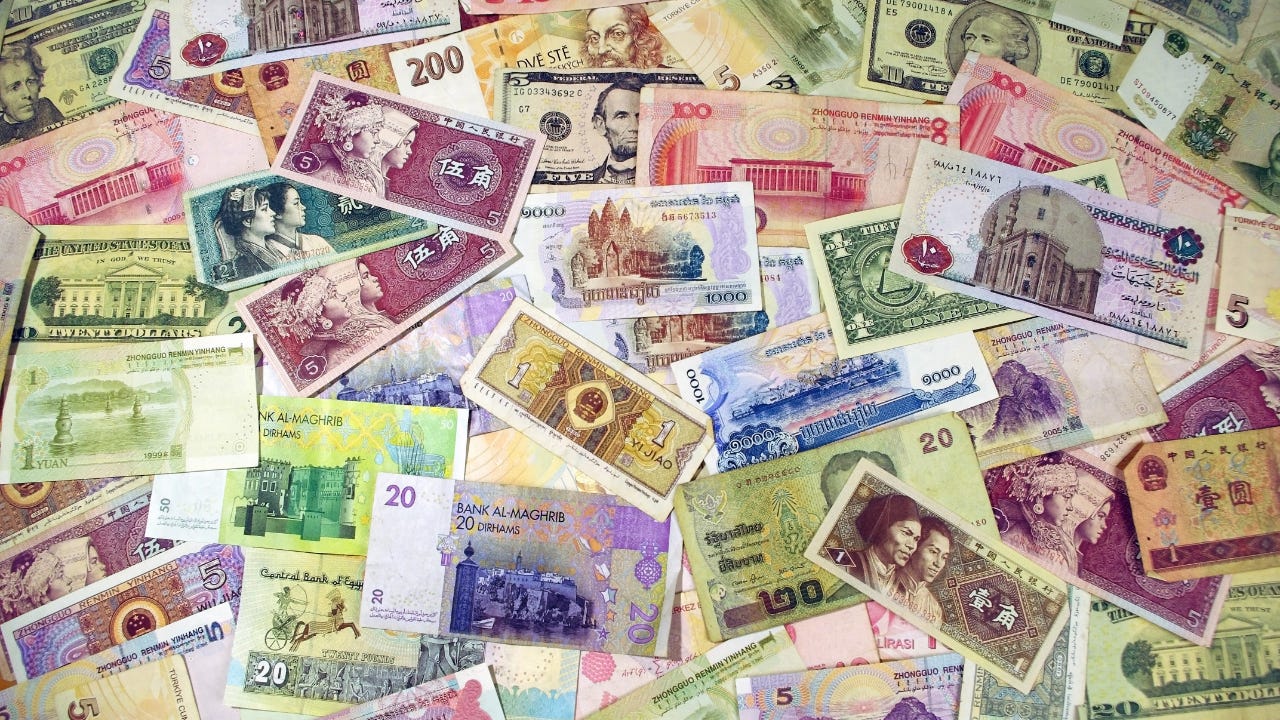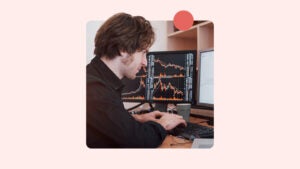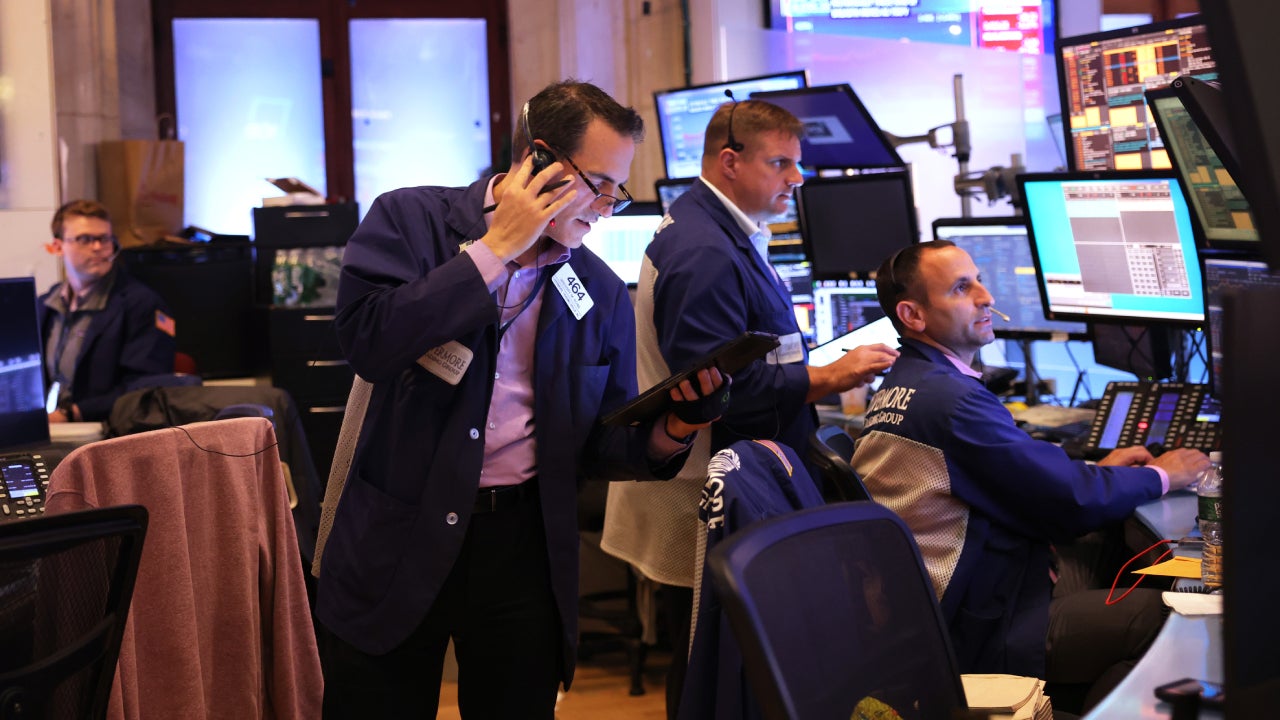What is forex trading?

Forex, or foreign exchange, trading involves exchanging one currency for another. Individuals or companies might have functional purposes to engage in forex trading, such as traveling or operating abroad and needing to exchange dollars for the currency of the country you’re in, but they may also have financial or speculative reasons to trade currencies.
Here’s some key information on forex trading, its history and trading strategies.
Key forex trading statistics
- Average daily forex volume in North America during October 2023 was $1.02 trillion, according to a survey from the New York Fed.
- That volume showed a nearly 26 percent increase from April 2019 levels of $810.9 billion.
- Global forex average daily trading volume was $7.5 trillion in April 2022, according to a triennial report from the Bank for International Settlements (BIS).
- The U.S. dollar is by far the most popular currency in forex transactions, involved in some 90 percent of transactions and on one side or the other of $6.6 trillion of the average daily volume in April 2022, the BIS found.
- The next most popular currencies were the Euro at $2.3 trillion and the Japanese yen at $1.3 trillion, according to the BIS report.
What is forex trading?
Forex markets can be used to exchange one currency for another, and there are several reasons why this might be necessary. Businesses that operate in more than one country, financial traders and people looking to travel abroad all have reason to engage in forex trading.
Due to the vast needs for foreign exchange, forex markets tend to be the biggest and most liquid of any in the world, but some currencies can be volatile.
The history of forex trading
The trading of currencies has existed in some way for centuries. People have long needed a way to pay for goods and services, and different currencies have been a major part of that. But today’s more modern forex markets are a relatively recent creation.
- In July 1944, representatives from 44 nations gathered in Bretton Woods, New Hampshire to establish a monetary system that would create exchange rate stability, prevent competitive currency devaluations and promote economic growth.
- The Bretton Woods system became fully operational in 1958, with currencies being convertible, international debts settled in dollars, and dollars being convertible to gold at a fixed exchange rate.
- In 1971, U.S. President Richard Nixon ended the dollar’s convertibility to gold after the amount of foreign-held U.S. dollars exceeded the U.S. supply of gold.
- Following the collapse of the Bretton Woods system, countries were free to choose any arrangement for the exchange of their currency, except pegging it to gold. Currencies could be tied to another currency, a basket of currencies or be determined exclusively by market forces.
- Today, forex trading is done mostly by banks on behalf of clients, and trading occurs 24 hours a day from 5 p.m. ET on Sunday through 4 p.m. ET on Friday. Individuals can even trade using an app on their phone.
The largest forex trading centers
Most forex trading occurs in London, followed by New York, Singapore and Hong Kong. Some thought the U.K.’s decision to leave the European Union would dent London’s spot as the largest forex market, but that has not proven to be the case.
| Rank | Country | Average DailyVolume ($ millions) | Share of forex market |
|---|---|---|---|
| 1 | United Kingdom | 3,754,661 | 38.1 percent |
| 2 | United States | 1,912,350 | 19.4 percent |
| 3 | Singapore | 929,460 | 9.4 percent |
| 4 | Hong Kong | 694,359 | 7.1 percent |
| 5 | Japan | 432,527 | 4.4 percent |
| 6 | Switzerland | 349,742 | 3.6 percent |
| 7 | France | 213,730 | 2.2 percent |
| 8 | Germany | 183,934 | 1.9 percent |
| 9 | Canada | 171,952 | 1.7 percent |
Source: BIS Triennial Central Bank Survey 2022. Average daily dollar volume in all other countries is $1,200,420 million, or 12.2 percent of the total market share on a “net-gross” basis.
Risks of forex trading
Like most trading strategies, forex trading is not without risk. Here are some of the major forex trading risks to be aware of.
- Interest rate risk: Changes in a country’s interest rate will have an impact on its exchange rate. As interest rates change, forex markets can swing drastically.
- Leverage: Most forex trading involves the use of leverage, or borrowed money. The nature of leverage is that it magnifies gains and losses, meaning a small price change has a major impact on your position. If prices decline, you could face a margin call.
- Country risk: When you’re trading forex you’ll need to understand the stability of the underlying countries whose currencies you’re investing in. Understanding the financial system of a country is paramount, including the role of central banks and whether its currency is pegged to another country’s such as the U.S. dollar. All these factors can impact forex markets.
- Counterparty risk: Counterparty risk refers to the risk that the party on the other side of a transaction fails to perform their side of the deal. This could come into play during extremely volatile markets if a market maker were to become insolvent and unable to honor its obligations.
Forex trading strategies
Forex trading is fairly simple in concept, but that doesn’t mean you’ll make money trading currencies. If you’re just starting out, make sure to tread carefully and understand the trades you’re placing and how they can go wrong.
You can trade forex at some of the same online brokers that offer stock trading, but it may be worthwhile to work with a top forex dealer instead. Here are some strategies for beginners and more experienced traders.
- Beginners: Many traders use technical analysis to plan their next moves, which involves looking at charts and price action to try to anticipate where a currency is headed next. Trend trading is a strategy that is good for beginners because it’s fairly simple to understand and is essentially a prediction that recent price trends will continue.
- Intermediate: If you’re looking for a slightly more advanced approach, a carry trade may be a profitable option. A carry trade involves shorting a currency with low interest rates and buying a currency that pays higher rates. The Japanese yen is often used in this strategy because of the low interest rates in Japan. The trader then purchases a different currency to capture the difference in rates. But beware that exchange rates can move so that the gain in interest rates is wiped out.
Forex traders typically use significant amounts of leverage to magnify the relatively small moves of exchange rates on a day-to-day basis.
How to get started with forex trading
Forex trading has similarities with other investment options, but a few things make it unique.
- Open a brokerage account. Before trading any financial asset you’ll need to set up a brokerage account, which is easy to do online through places like Interactive Brokers or Charles Schwab. Not all brokers offer forex trading, so be sure to check that a platform does so before opening an account. Funding the account is fairly straightforward and can be done through an electronic transfer or a physical check. Funding the account online usually takes a couple of days.
- Learn forex basics. Trading forex presents some unique challenges that you might not be familiar with if you’ve only traded stocks or ETFs. The variables that drive forex trading and changes in exchange rates are different from those that drive stock prices. You’ll likely need to pay more attention to the macroeconomic factors for the countries whose currencies you’re trading. GDP growth, trading deficits and interest rates can play a big factor in exchange rates. Make sure to understand the key fundamentals before you start trading.
- Pick a strategy. Once you’ve got a grasp of the basics, pick which trading strategy you’d like to pursue. Will you use technical analysis to identify trends or follow more of a fundamental approach based on macroeconomic data? Both approaches can be successful, but it’s important to choose a strategy that makes the most sense for you.
- Start slowly. It’s best to go slow when you’re just starting out. There’s no need to shoot for the moon with your first trades. Start with small amounts as you’re learning so that any mistakes don’t wipe you out. As you gain more experience, you’ll be able to increase position sizes and recognize trends more quickly.






